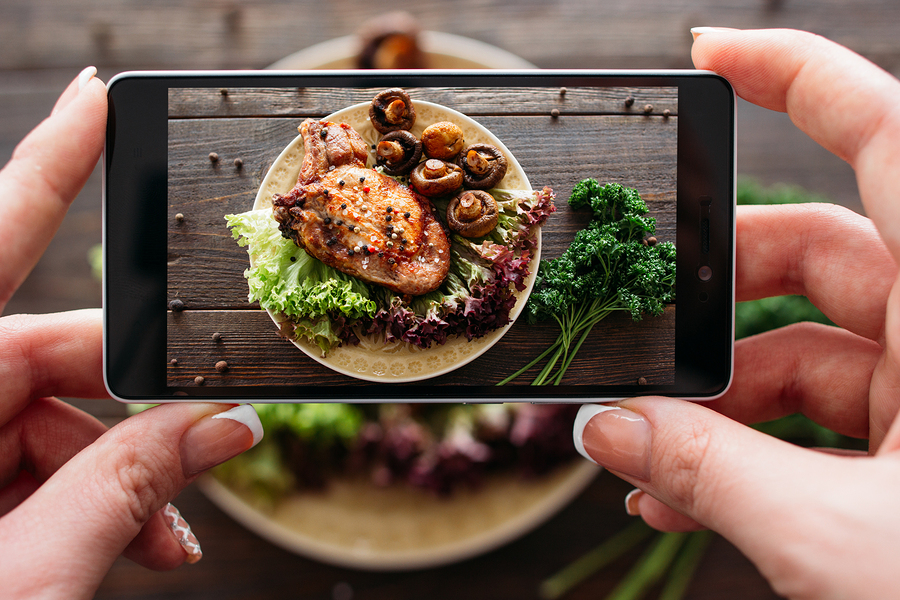
2019 and The Future of Food and Beverage Marketing
January 17th, 2019 Posted by Emergent Agency Services, brand marketing, brand strategy, CMO, consumer behavior, Consumer insight, food retail strategy, Healthy lifestyle, Healthy Living, Retail brand building, shopper experience, Supermarket strategy, Transparency 0 comments on “2019 and The Future of Food and Beverage Marketing”Our strategic roadmap for the year ahead…
Today we map the framework for business growth in 2019 anchored strategically to achieve trusted consumer relationships in the year ahead. As we begin this journey, it is important to note the incredibly important work by the Food Marketing Institute compiled in the “Power of Health and Wellbeing in Food Retail” report. In our estimation one of the best analyses FMI has produced in recent times.
This is a forward-thinking review created under the experienced leadership of Susan Borra of the FMI Foundation, and executed with persuasive evidence by David Orgel of David Orgel Consulting, and key data supplied by The Hartman Group. It is also a remarkable summation of what Emergent has been forecasting and publishing in various venues for the last five years about evolutionary changes in the food and beverage industry.
- What’s ahead is a deeper dive on the strategic priorities, areas of focus for planning, and a healthy helping of relevant consumer insight data.
Thus it is job number one at Emergent: to earnestly pursue insight into the hearts and minds of consumers – their wants, wishes, dreams, aspirations, fears and concerns. It is in this effort to get ‘underneath’ that we more fully grasp how consumer relevance and engagement can be achieved. Make no mistake, it’s more difficult to be seen and heard than at any other time in modern marketing history because the consumer controls the levers of commerce – and talking ‘at them’ is a recipe for disconnect. Thus why relevance matters greatly.
Dear reader, here we will summarize the most important and salient points and data that should be reflected in go-to-market planning for the year ahead. Simply said, this is a great way to kick off the year – offering firm, insight driven strategic guidance on what matters to people and its influential link to their purchase and shopping behaviors.
Armed with this understanding, the path to trust and relationship becomes clearer. As we’ve said many times before, genuine relationship is everything. Consumers are not walking wallets; they are real, living constituents – and to the extent businesses can make a meaningful difference in their lives, the opportunity to earn affection and spending multiplies.
- Without consumer relevance and resonance, food and beverage brands cannot gain the ear and interest of consumers who have more quality choices, more channel options, more control and power than ever before – power that will quickly mark the winners and losers in the next 12 months and beyond.
The number one opportunity for brand and food retail resonance and business traction: leveraging Health, Wellness and Wellbeing.
Consumers across all age cohorts have fully connected the dots between the quality and types of food and beverage they consume and their overall quality of life. For this reason, the very definition of health and wellbeing has expanded to include a broader array of key lifestyle attributes consumers care about such as emotional health and happiness.
Whereas “healthy” was once more narrowly defined as weight management and calories in and out, today it is about food quality and the origin story behind the food. This interest is fueled by consumer demand for transparency as a new prerequisite for creating lasting, meaningful relationships with the consumers we wish to serve.
Yes that’s serve, and not sell! Transactional thinking can infect the marketing playbook with ill-advised strategies and foster brand behaviors the consumer immediately repels as advancing the company’s commercial interests over their own; selling at them rather than cultivating their trust which precedes any willingness to spend money.
2019 Strategic Building Blocks
Five key areas demand attention in strategic planning. This list provides the basis for a holistic strategy that reflects what consumers truly care about. It goes without saying these five areas allow for a wealth of engagement from content creation to communication activities. Here they are:
- Health – Number one is the growing influence of healthier eating on brand choice. Healthy, by the way, is increasingly a quality story not a sacrifice game. Healthy and indulgent are cohabitating.
- Nutrition – Consumers are now looking at nutrition density in the foods and beverages they prefer. This tracks closely with the table stakes demand for greater transparency around product ingredients, sourcing and manufacturing. What was once described as a clean label is transforming into clear This is marked by disclosure, clarity, openness, honesty and more guidance not less.
- Enjoyment – Taste is fundamental to the human experience. Higher quality food experiences can be found everywhere and the use of fresher, real food ingredients is elevating the taste experiences people crave. Food is to be savored and enjoyed. It is an adventure. There’s a hedonist lurking in everyone in varying degrees.
- Discovery – Meal kits might offer an excellent example of how the food industry feeds low-risk culinary experimentation. The growth of new cuisines, tastes, global flavors and use of more exotic ingredients serve to expand the horizons of what consumers want and expect. We all want more choices than meatloaf and fried chicken at the Deli counter.
- Connection – Food is a social lubricant. It is a facilitator and player in how we relate to and engage our friends, family and business associates. No surprise here that according to the FMI report, 84% of consumers say it is very or extremely important to have a family meal together at home. People hunger for the connectivity and social discourse around the table. Food is an essential player in our social lives. Great food and great conversation are partners in life’s most memorable moments.
Two Key Strategic Trends in 2019
We stand today at the threshold of a new developing category in food and food retail. Early movers in this space stand to benefit from ‘first with the most’ opportunities that fall from being able to define what this new category is about and what constitutes best practices.
- Food As Medicine
This is an evolution and elevation of food and beverage solutions – products that aim to provide direct, measurable benefits to health and wellbeing. We’re not speaking just about weight management, although that is a component. We’re talking about food solutions that are an alternative to drug therapies or as preventatives to needing drug therapies.
In case after case we find that diet plays a role in the onset of disease. So, too, we’re discovering that foods high in fiber, plant sterols, Omega-3s, antioxidants, prebiotic and probiotic ingredients can be ‘dosed’ to achieve specific health benefits – without the often debilitating, unhappy side effects that can accompany medications.
Step One Foods in Minneapolis (disclosure: Step One is an Emergent client) is an excellent example of this emerging trend. Step One’s line of packaged foods including bars, smoothie and pancake mixes, oatmeal cereal and toppers are clinically proven to reduce LDL cholesterol at levels that match or exceed the outcomes from statin drugs.
It’s important to note from FMI’s report that 66% of shoppers already view foods as “medicine for their body.” When asked about food as a contributor to their health, the top five interests in solutions include:
- Cardio-vascular health – not surprising as heart disease is the number one killer in America, and effective options like Step One speak directly to this need.
- Weight management – a perennial concern, weight management remains connected to healthy lifestyle and a sense of wellness and wellbeing.
- Energy – the link between energy and lifestyle satisfaction is palpable. Busy lifestyles and career demands make energy an important priority for people.
- Brain function – memory and cognition are two areas we can expect more innovations to surface in as people increasingly look for a mental edge.
- Digestive health – we are only beginning to see the growth in attention paid to inflammation and its role in aging and disease. This will continue to get greater innovation priority.
- Mining competitive advantage: Fusion of Transparency and Trust
Earning trust may be the single most important objective in the development of sound, successful marketing plans. This is due in no small part to its pivotal role in securing consumer interest and engagement and the avalanche of evidence that brand trust continues to decline.
Trust precedes any kind of brand/consumer relationship. Demand for transparency is the ante in curating trust. Consumers define transparency as “open, honest, clear and visible.” In short being transparent, providing access and more information about how food and beverages are made and what’s in them.
FMI’s report cited five key areas where consumers are looking for greater disclosure:
- Ingredients used
- Origin of ingredients
- Product creation process
- Animal welfare
- Absence of anything artificial like preservatives or chemicals
Emergent guidance: build a suite of communications and content around how you make your products, the stories of suppliers and their work, what happens at your plant, what your standards are on quality, safety and sustainability.
It’s interesting to note, when consumers were asked who their allies are in the quest for healthy living and helpful advice, the top five sources were:
- Family
- Doctor
- Farmers – take note!
- Friends
- Fitness and health clubs
According to FMI’s report, when it comes to the most respected and trusted voices for guidance on healthy living, those sources include:
- Registered dietitians
- Personal healthcare providers
- Wellness counselors
- Scientific studies
- Fitness professionals
Emergent guidance: this insight suggests the efficacy of consumer-generated content, investment in social communities and relevant content, and use of respected third parties to validate what food brands want consumers to know and believe.
Food Retail Opportunities
There will be more competitive shifts and changes for food retail in the year ahead. So how does this play out as retailers seek to re-invent themselves?
In Hartman Group’s “Food Shopping in America” Report, a consumer survey of retail channel preferences showed supermarkets scored well on assortment, products consumers want and preferred brands. But indexed lower than other channels of retail on a good place to browse and shopping enjoyment.
As center store continues to be dis-intermediated by e-commerce, competitive advantage is shifting to favor specialization and in-store experience. FMI’s report lands on two key areas of opportunity that point the way for food retails to enhance relevance and increase traction with shoppers.
The Healthy Living Coach…
Food retail has an important opportunity to answer the consumer’s desire for healthy lifestyle by assuming a stronger role in an area shoppers already think retailers can fill.
Consumers believe food retailers are a potential ally and guide on their journey to a healthier, higher quality life. The retailer can operate as coach through access to expert voices, better and healthier food solutions and providing in-store experiences or classes on healthier cooking and shopping techniques.
Nearly 50% of consumers, according to FMI’s report, say providing healthier food choices is a way to support ‘Eating Well’ which contributes to ‘Living Well.’ When asked what the components of Eating Well include, consumers saw this as an integration of healthy eating and enjoyment.
Specifically, retailers can offer:
- Nutritious food and beverages
- Higher quality foods
- Portion control – eating in moderation
- Foods with specific benefits (food as medicine)
But perhaps the most important business growth opportunity for 2019 lies in the resurgence of home cooking. According to Hartman Group survey data, 88% of consumers say they eat healthier at home than at restaurants. Home-prepared food carries with it a healthy halo. Knowing how important eating with family at home is to consumers, retailers can answer this call with greater investment in prepared food options from complete menus to meal kits and other prepped ingredients.
What’s important to note here is the enhanced demand for better quality food, unique meal experiences and culinary exploration. Thus retailers need to up there hot bar game from ribs and rotisserie chicken to more interesting, chef forward dishes.
In sum, it’s about activating wellness solutions from produce, to center store to foodservice. Putting adventure and discovery back into food shopping will go a long way to creating advantage and loyalty even as consumers move increasingly to online shopping for everything else.
We have another post coming on omni-channel strategies. Stay tuned…
Looking for more food for thought? Subscribe to our blog.
Bob Wheatley is the CEO of Chicago-based Emergent, the healthy living agency. Emergent provides integrated brand strategy, communications and insight solutions to national food, beverage, home and lifestyle companies. Emergent’s unique and proprietary transformation and growth focus helps organizations navigate, engage and leverage consumers’ desire for higher quality, healthier product or service experiences that mirror their desire for higher quality lifestyles. For more information, contact [email protected] and follow on Twitter @BobWheatley.




